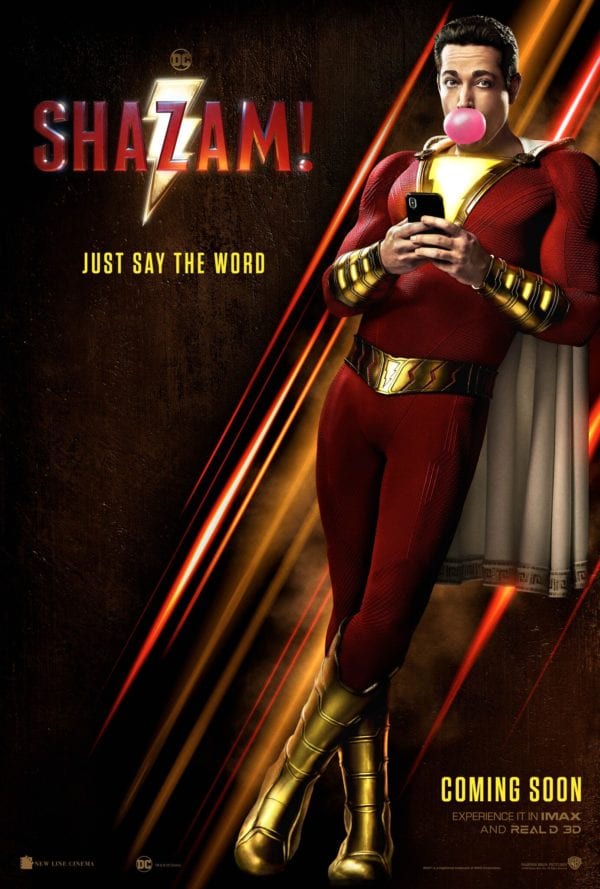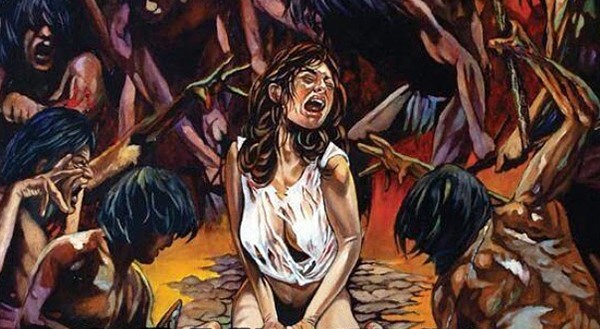Shazam, 2019.
Directed by David F. Sandberg.
Starring Zachary Levi, Asher Angel, Jack Dylan Grazer, Mark Strong, Djimon Hounsou, Grace Fulton, Faithe Herman, Ian Chen, Jovan Armand, Cooper Andrews and Marta Milans.
SYNOPSIS:
A teenage foster child becomes an unlikely superhero when he is handed magical powers by a dying wizard.
DC has finally learned one of the classic superhero lessons. After years of trying to ape Marvel’s gargantuan world building and intricate shared universe, the head honchos of the rival comic book studio have ditched the flowchart and opted to go their own way. As countless superhero stories over the years have suggested, all you can do is “be the best you that you can be”. After the defiantly out-there marine politics and cephalopod percussionists of Aquaman, DC’s latest is Shazam – a truly bizarre superhero oddity that creates an unusual balance between broad comedy and surprisingly nasty material.
The premise is a refreshingly simple one that has been thoroughly teased in the trailers. Wayward foster kid Billy Batson (Asher Angel) is, for some reason, deemed worthy of magical powers by the dying wizard Shazam (Djimon Hounsou). By simply saying the wizard’s name, Billy transforms into the titular superhero (Zachary Levi), with super-speed, super-strength, bullet immunity and a selection of other powers. Shazam’s robbery-stopping antics draw the attention of the malevolent Dr Thaddeus Sivana (Mark Strong), who had his own encounter with the wizard as a child.
One of the most interesting things about Shazam is its deeply unconventional tonal balance. The film has been marketed as a candy-coloured comedy, with Levi wholeheartedly embracing the ‘kid in an adults body’ shtick. Director David F. Sandberg, though, is best known for his work on horror movies like Lights Out and Annabelle: Creation, and that background comes to light frequently. This is a superhero movie that peppers its flamboyant comedy with legitimate jump scares, deadpan defenestration and face-eating demons far more terrifying than anything that appeared in the 15-certificate Venom last year.
But that’s not to say that the film is a dark and depressing tale. Once it gets past its surprisingly bleak prologue and wades through some early exposition, it finds a groove. Sandberg makes the audience wait for the arrival of Levi, but the former Chuck leading man erupts into the film like a super-powered sugar rush. He’s clearly having as much fun in the costume as Billy is, so it’s not much of a stretch for him to dial up that silliness into a superhero who never loses sight of how cool his powers are. Like any kid in an adult’s body, he wastes no time in skipping school, buying beer and chatting up girls using the name Maximum Voltage (“but you can call me Max”). Needless to say, that name does not stick. Neither does “Thundercrack”, swiftly rejected because it “sounds like a butt thing”.
Levi’s persona would, however, become wearisome without the work of Jack Dylan Grazer as his superhero nerd foster brother Freddy. Last seen as the hypochondriac member of the Losers’ Club in It, Grazer provides real depth to what could easily have been a rather thankless role. The importance of family, whether biological or not, is a key theme of Shazam and Billy’s voyage of super-powered discovery coincides with his learning how to be a part of his new foster family, with their saccharine dinner table rituals and love of hugs. Grazer’s facade of humour, which masks real sadness and obvious jealousy of Billy, cracks to real emotional effect and Henry Gayden’s script knows exactly when to amplify moments of seriousness amid the zany comedy and spectacle.
That spectacle and silliness, though, is an absurd delight. Shazam’s powers are among the most impressive in the DC world, but there’s a joy in watching them manifest through someone who has no idea how to wield such ability. When he first meets Mark Strong’s evil Sivana – complete with majestic coat and glowing purple demon eye – Billy is terrified and unprepared for someone who can match at least some of his abilities. There’s nothing here that can match the tightly choreographed mayhem of Wonder Woman – or even the other Captain Marvel – but there’s a joy to the way Sandberg finds great gags within his action. A particular joke about ridiculous third act stand-offs lands harder than just about anything in the film, as does the nicely played, inevitable nod to Tom Hanks classic Big.
Shazam works very well indeed as a standalone tale – albeit one that has a lot of fun with nods to both Batman and Superman – and seems a vindication of DC’s decision to step away from labyrinthine shared continuity. Unencumbered by the need to set up future films, it’s an idiosyncratic beast with a tone that’s entirely its own – a far cry from the endless grit and desaturated cityscapes that have been the hallmark of the DCEU to date.
By the time we get a delirious final gag and two post-credits sequences of delightful weirdness, Shazam has cemented itself as one of the best DCEU movies. As the screen cut to black for the final time, I found myself chomping at the bit to see Levi step into that preposterous scarlet suit all over again.
Flickering Myth Rating – Film: ★ ★ ★ ★ / Movie: ★ ★ ★ ★
Tom Beasley is a freelance film journalist and wrestling fan. Follow him on Twitter via @TomJBeasley for movie opinions, wrestling stuff and puns.















